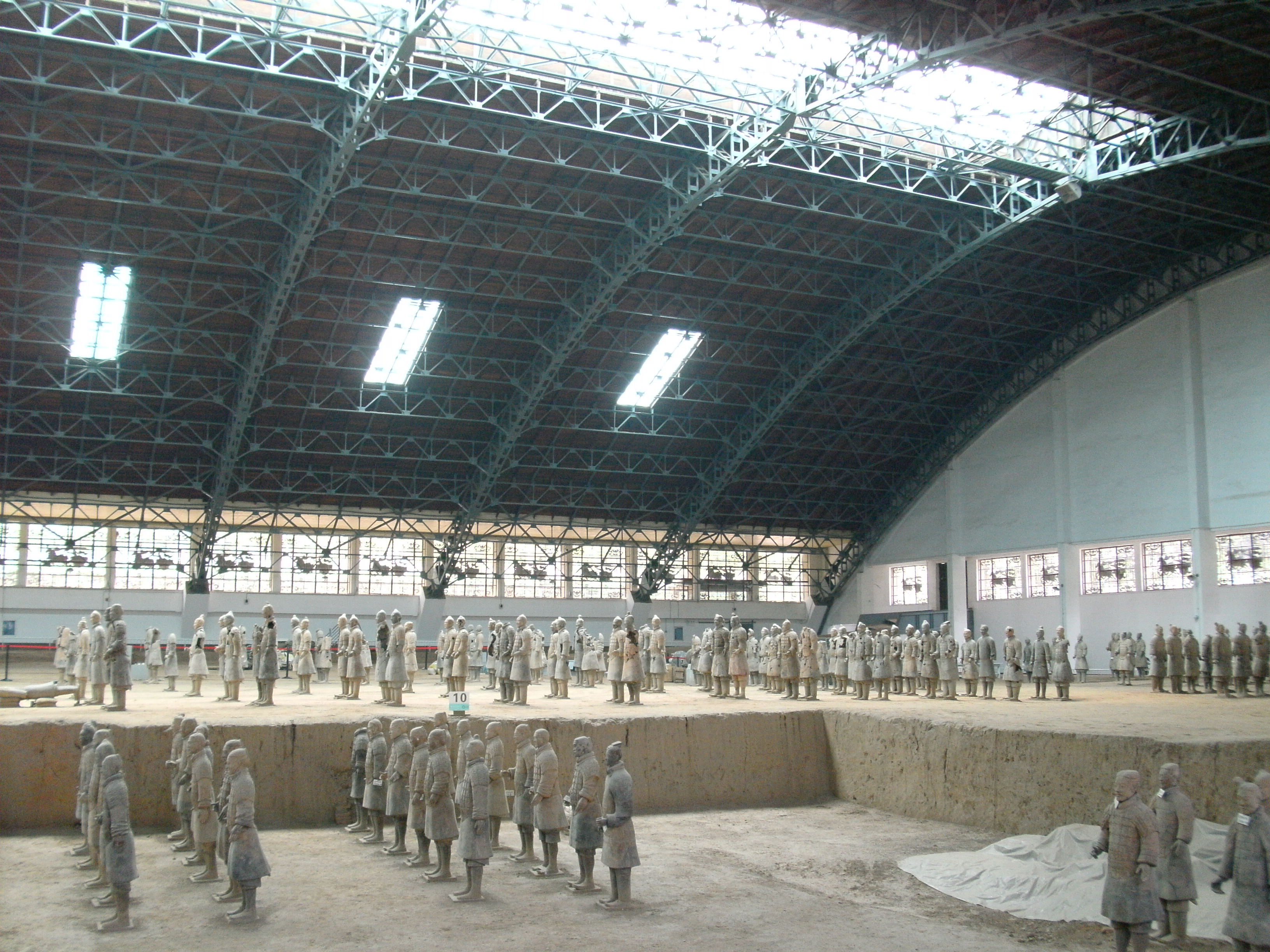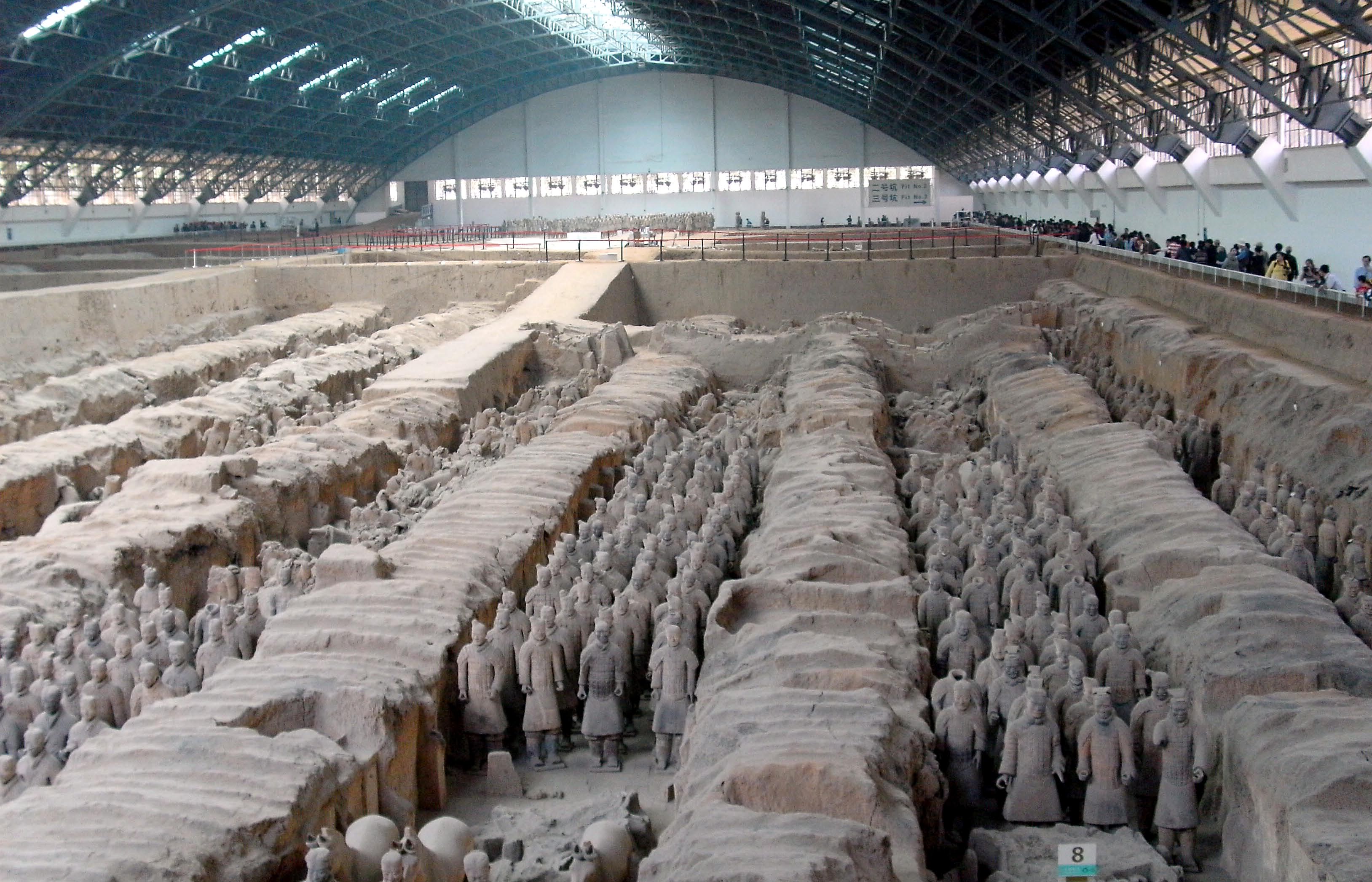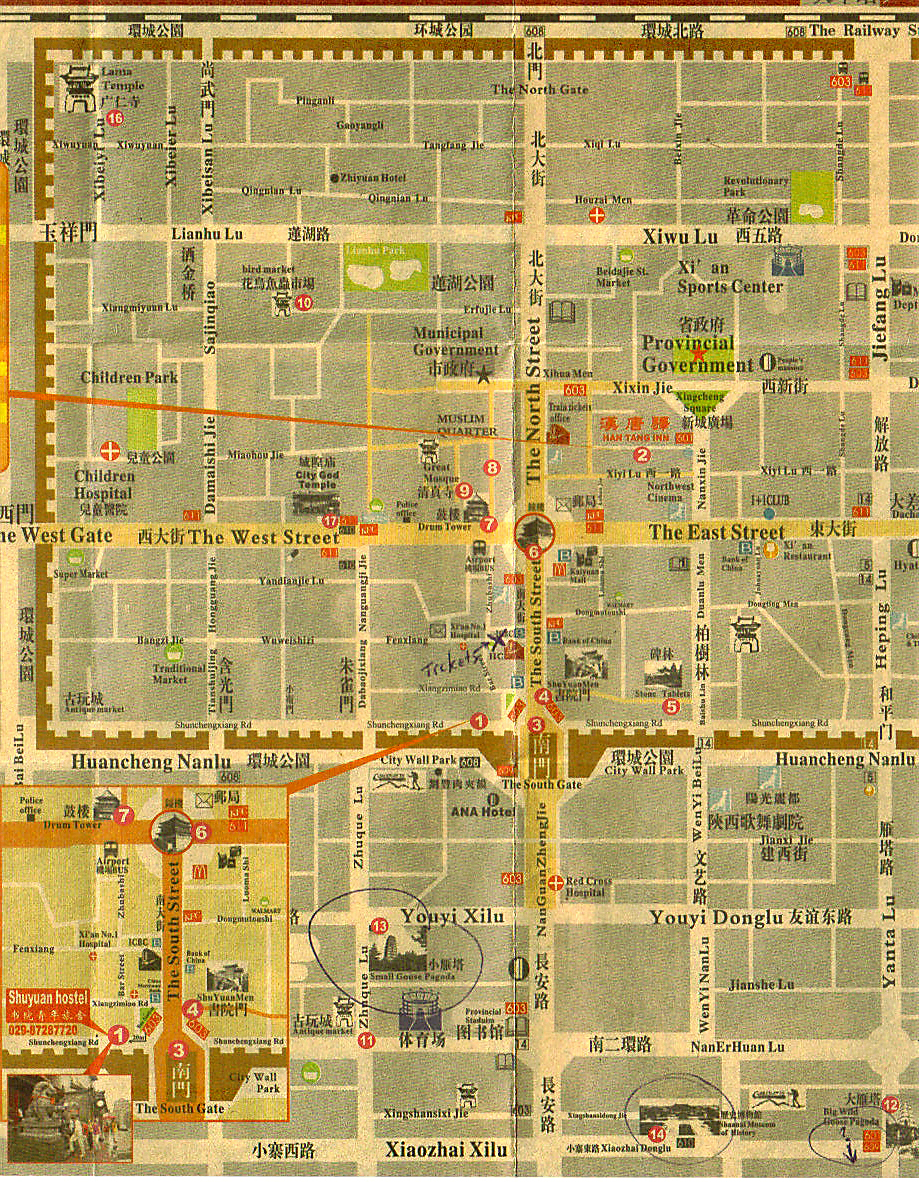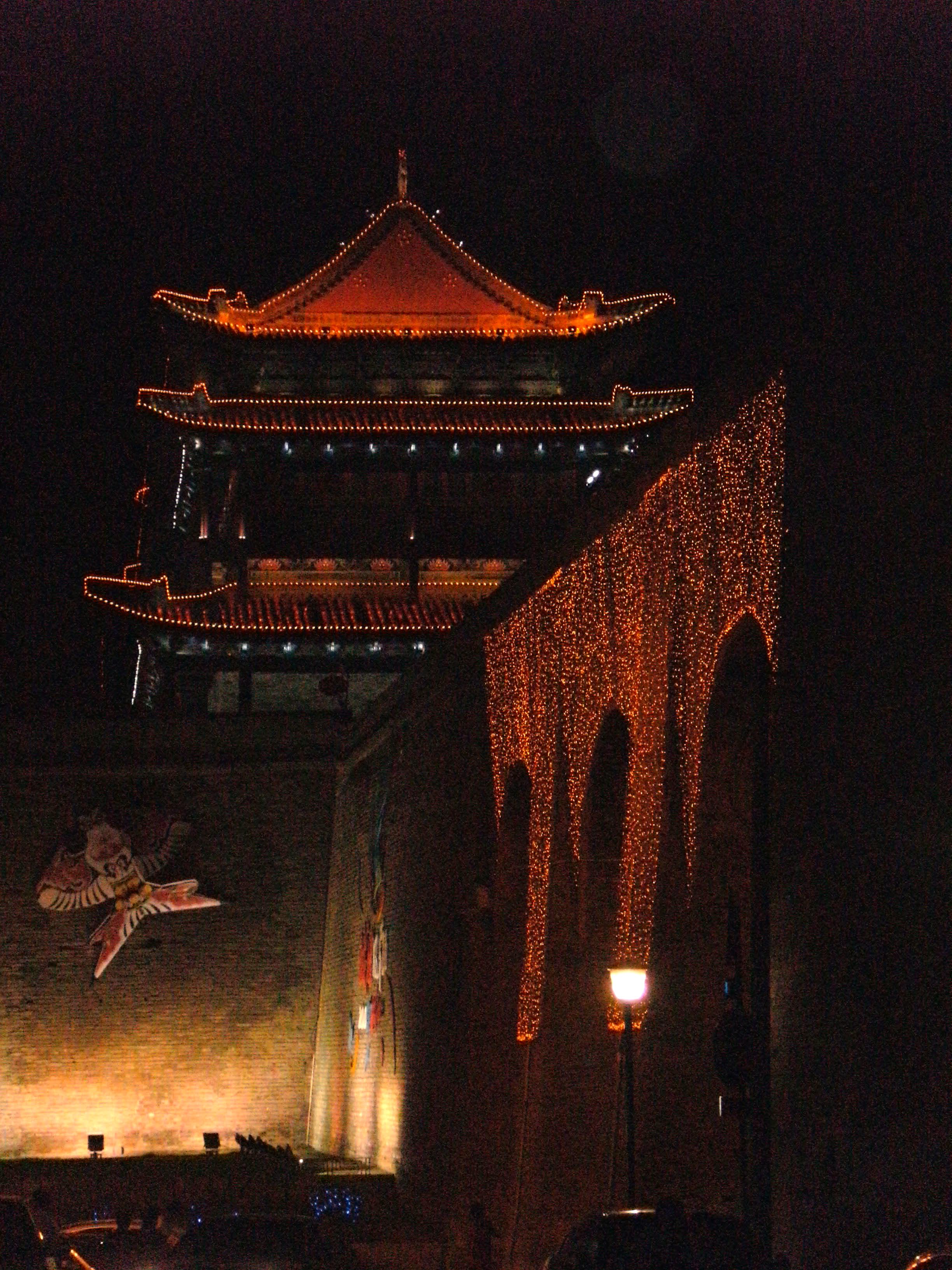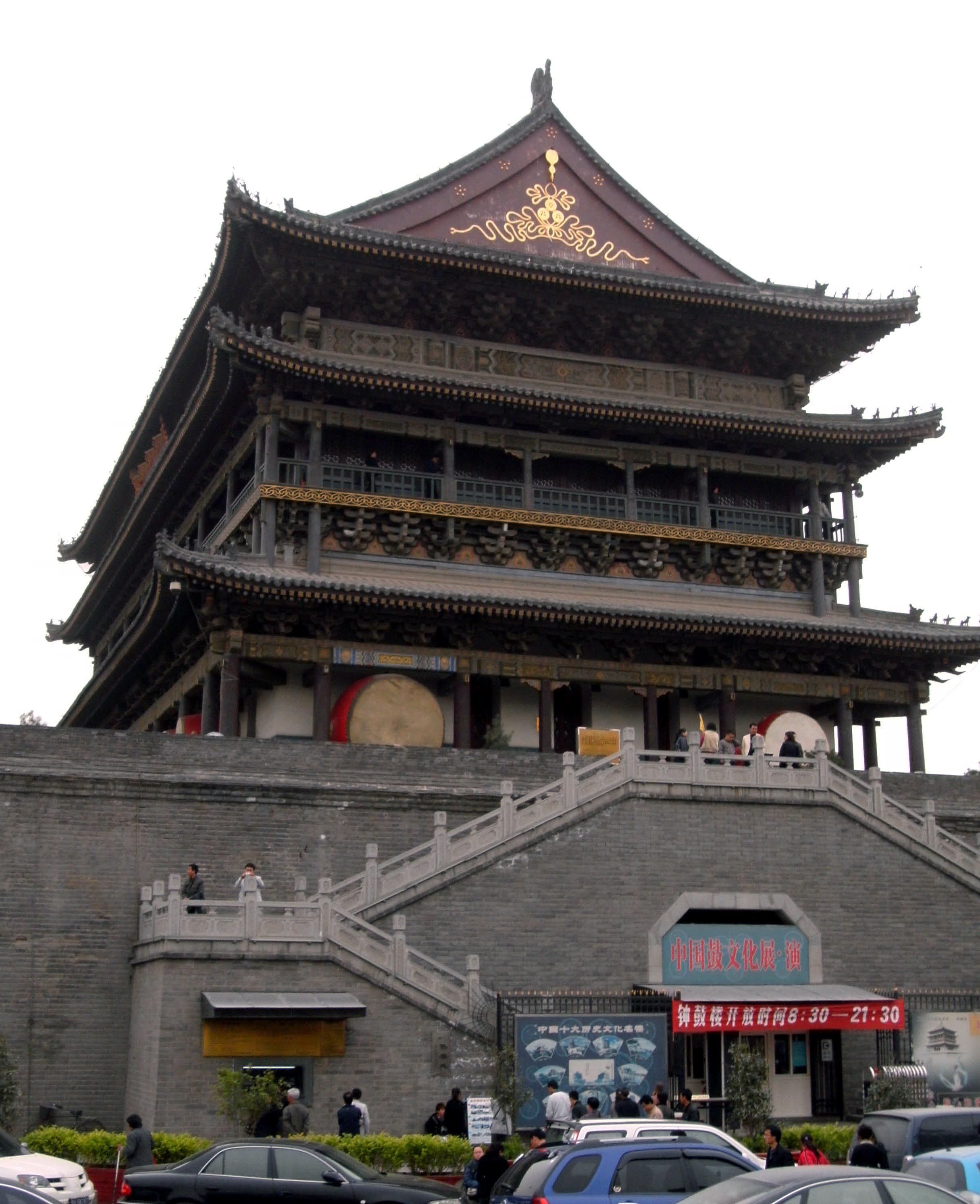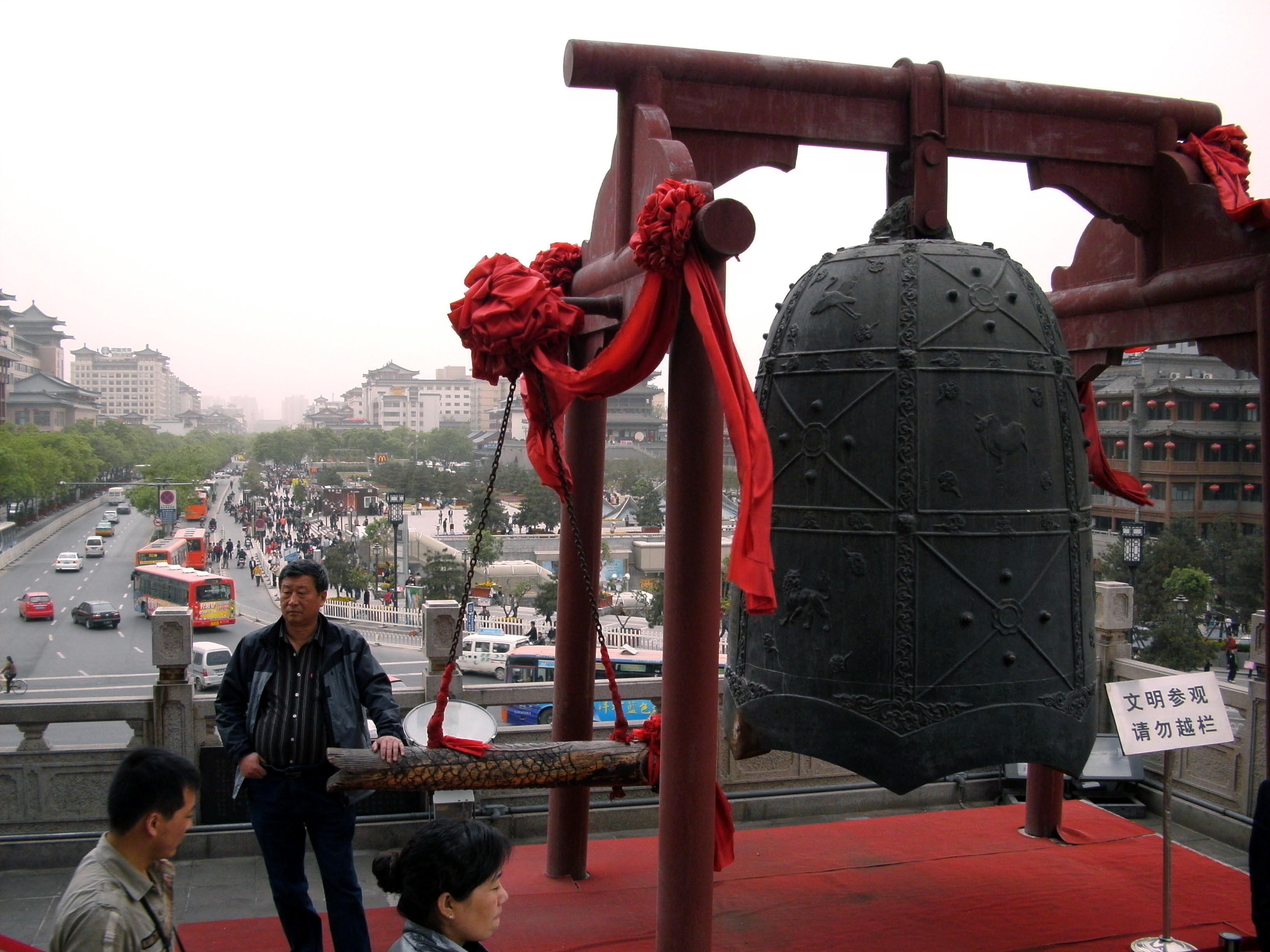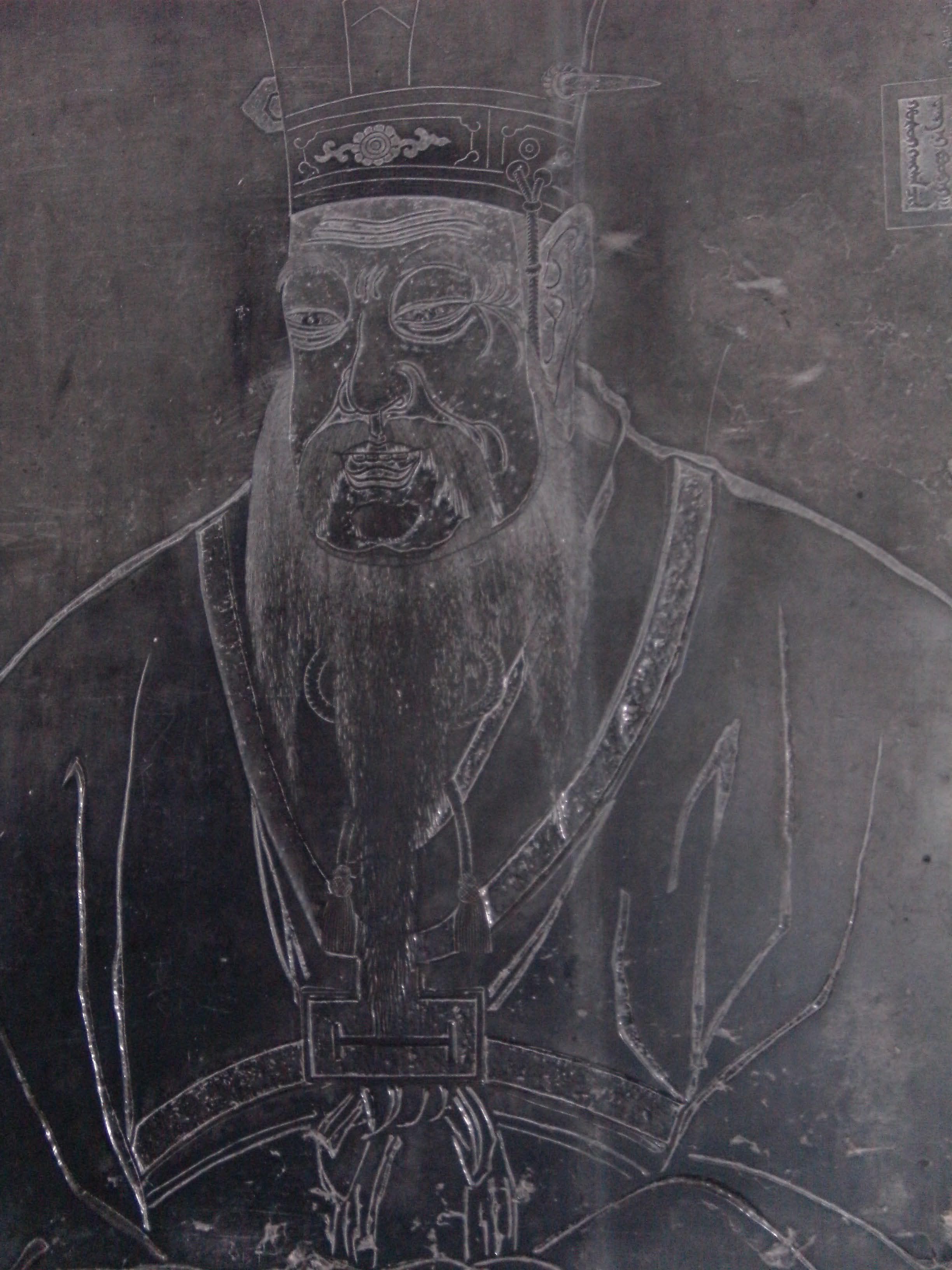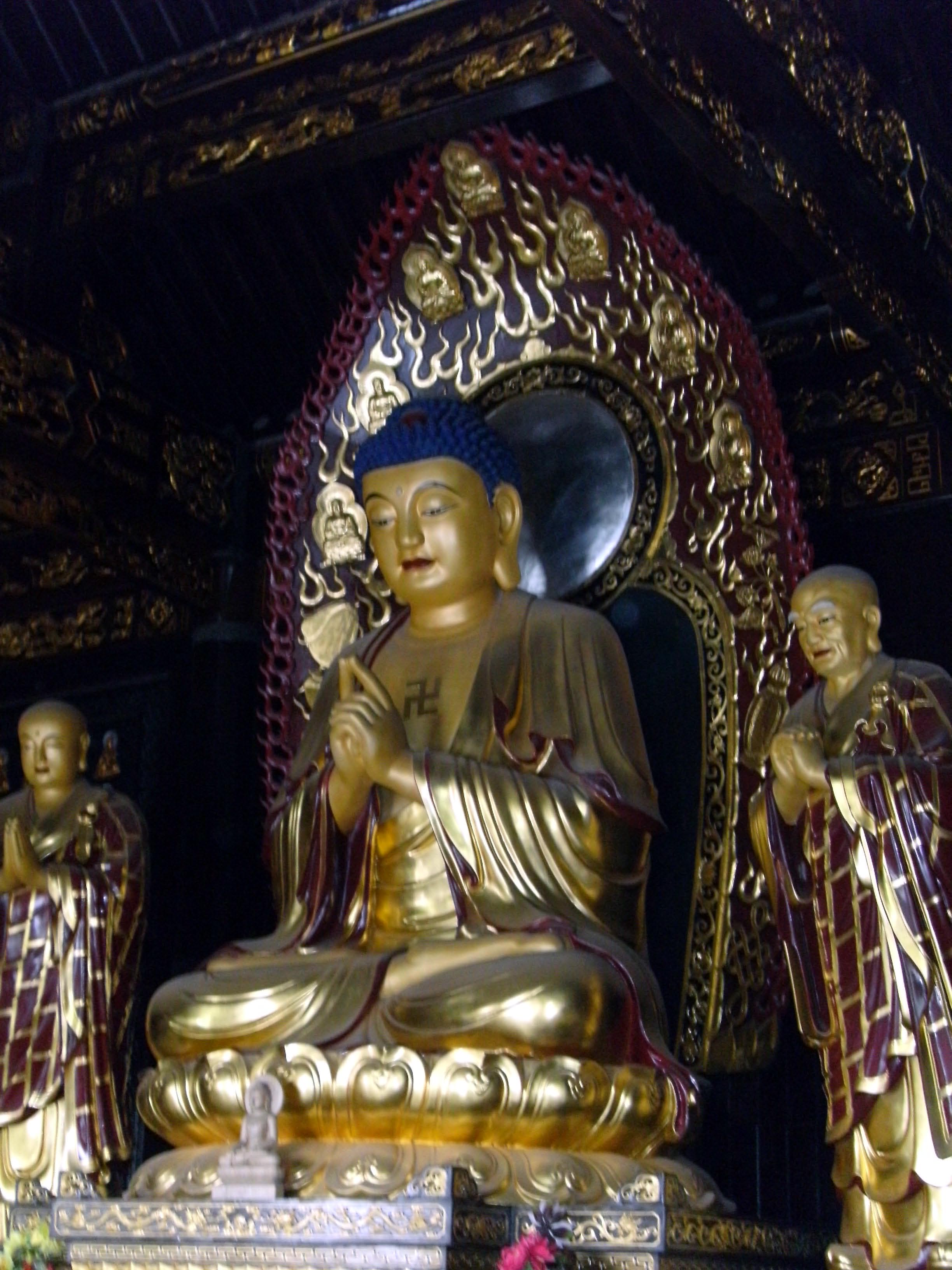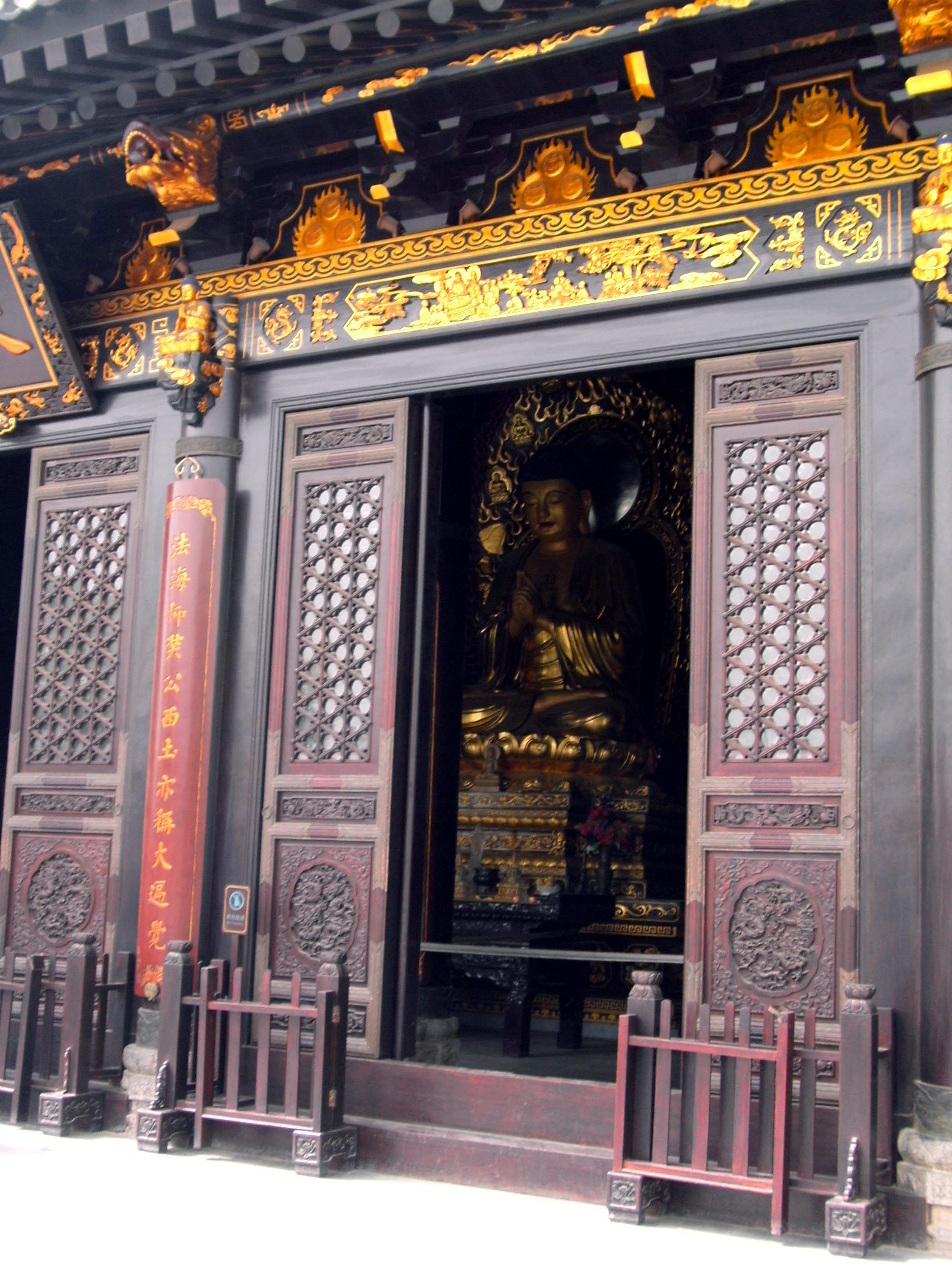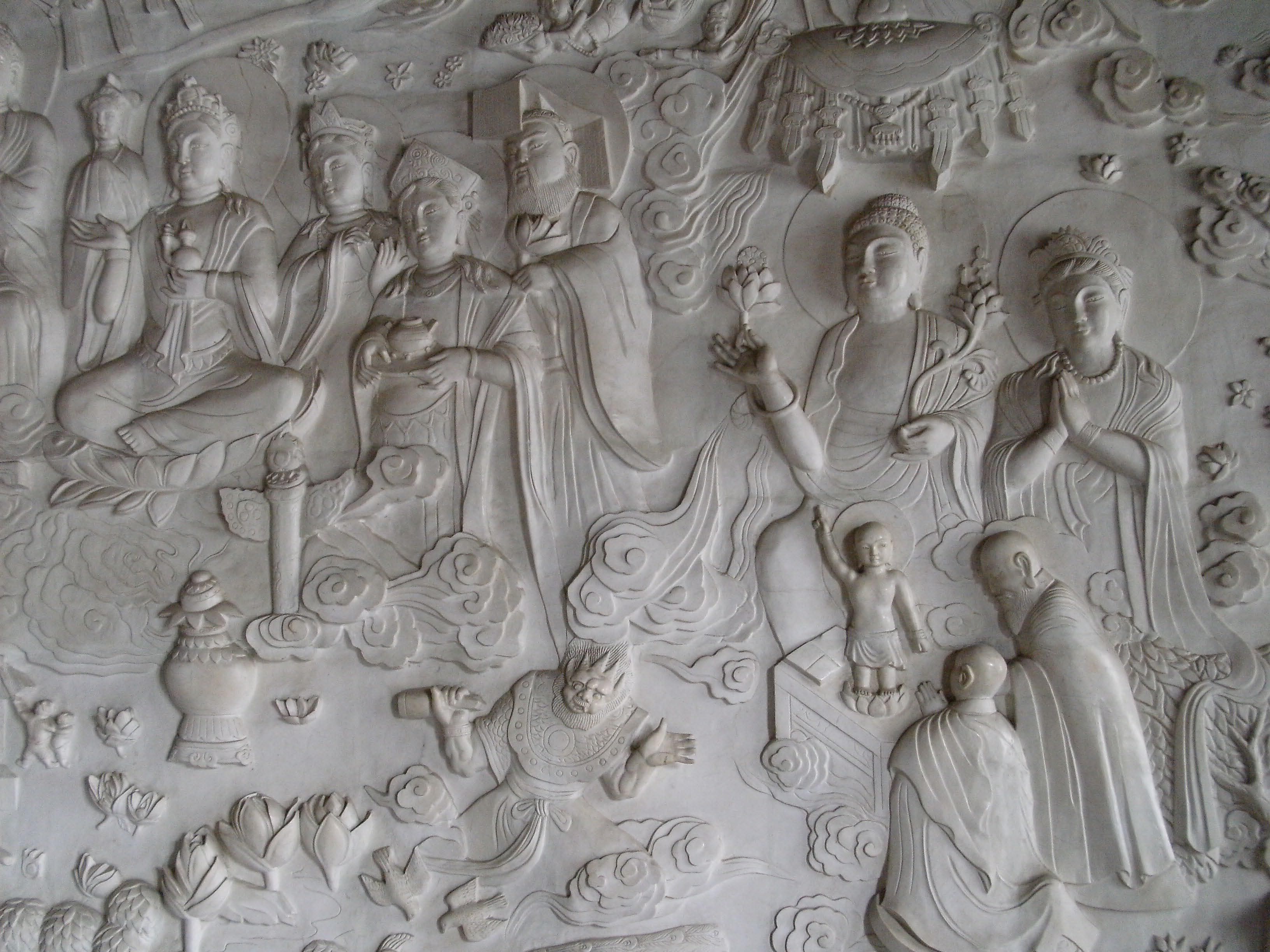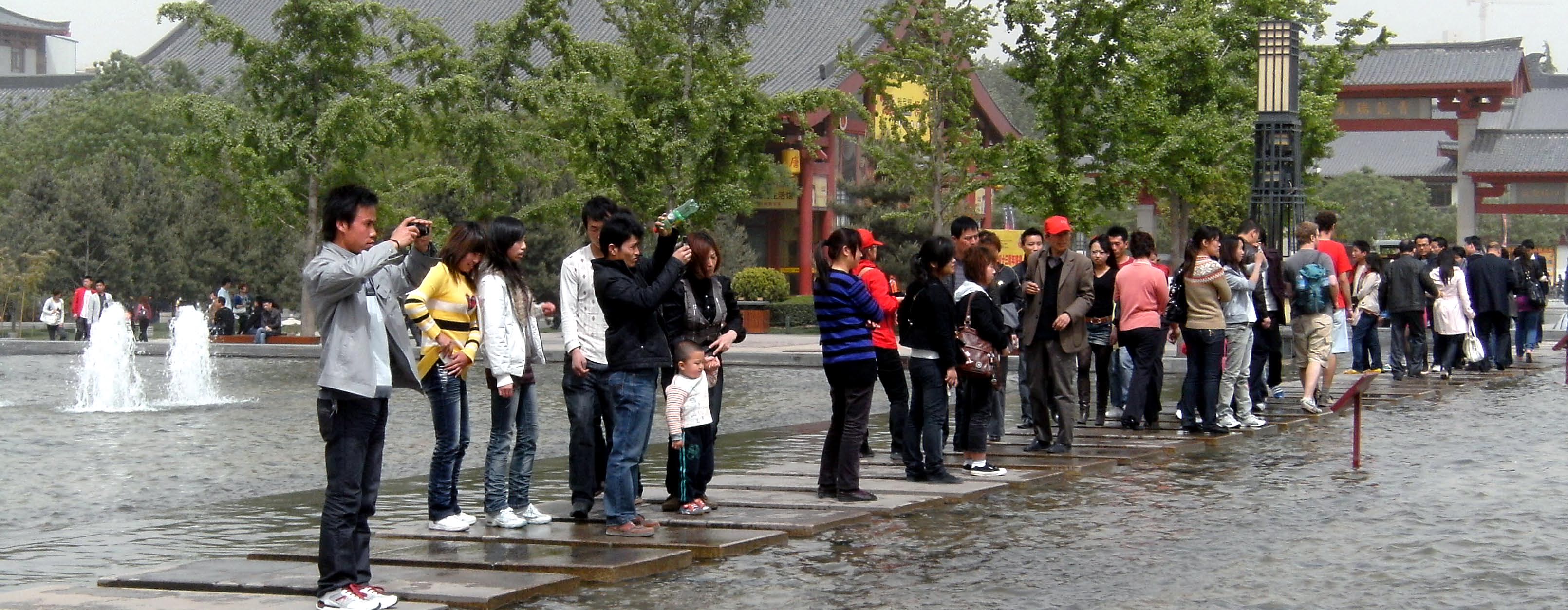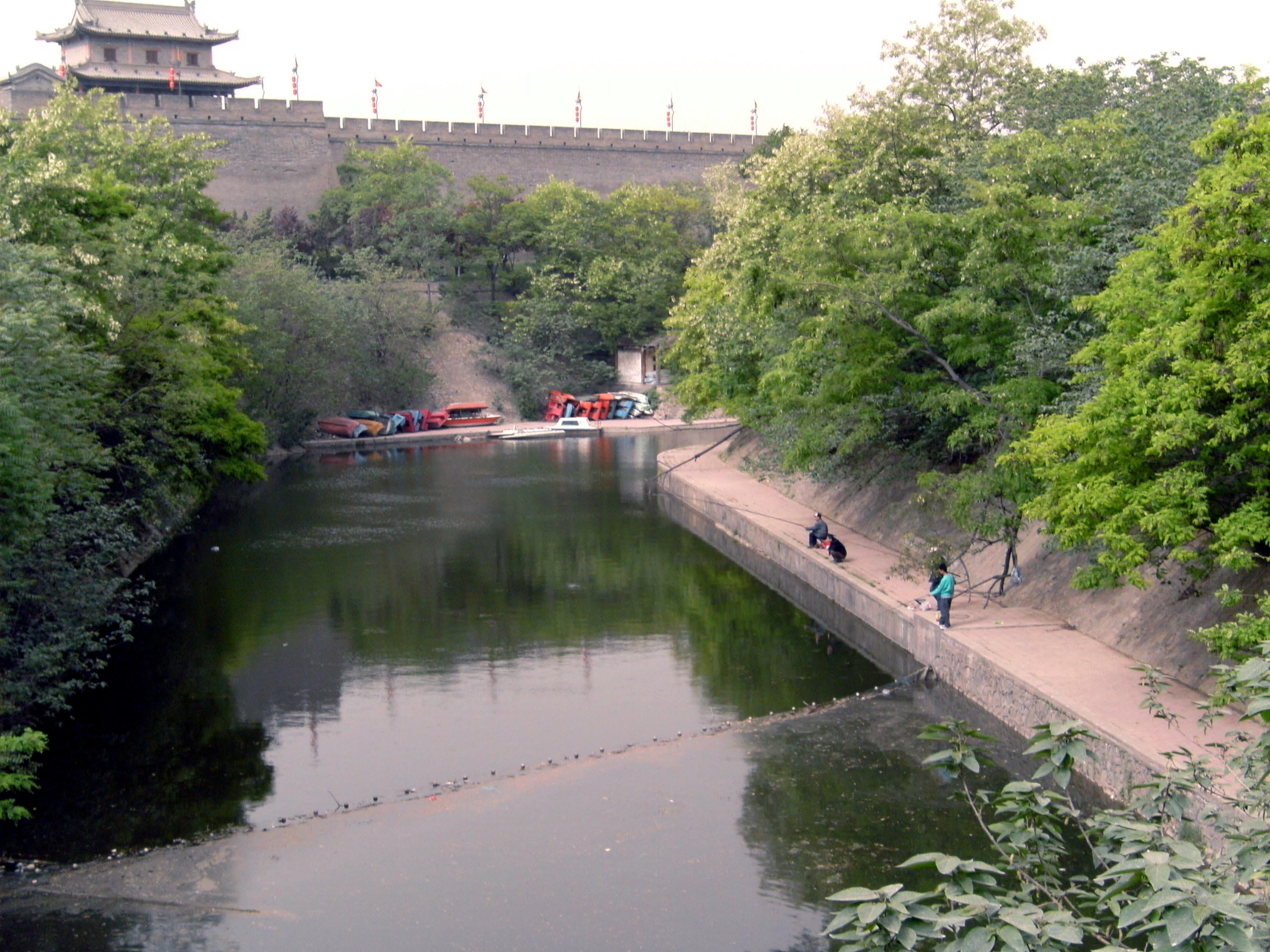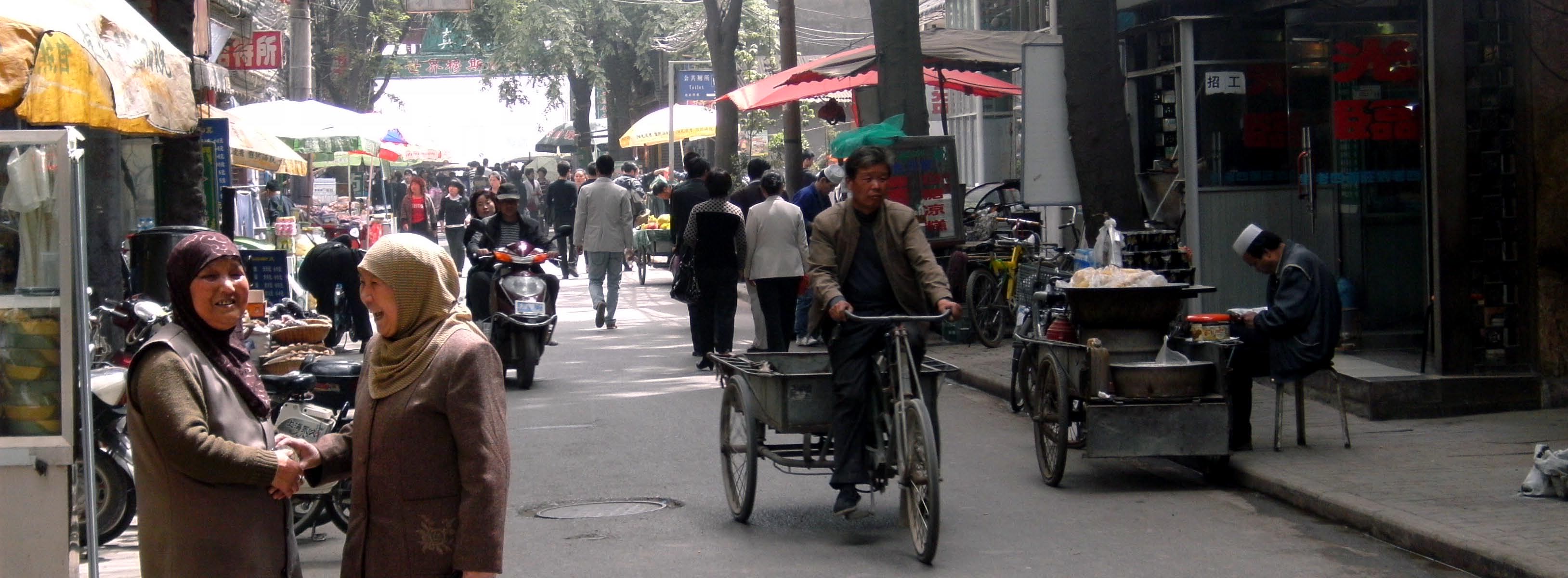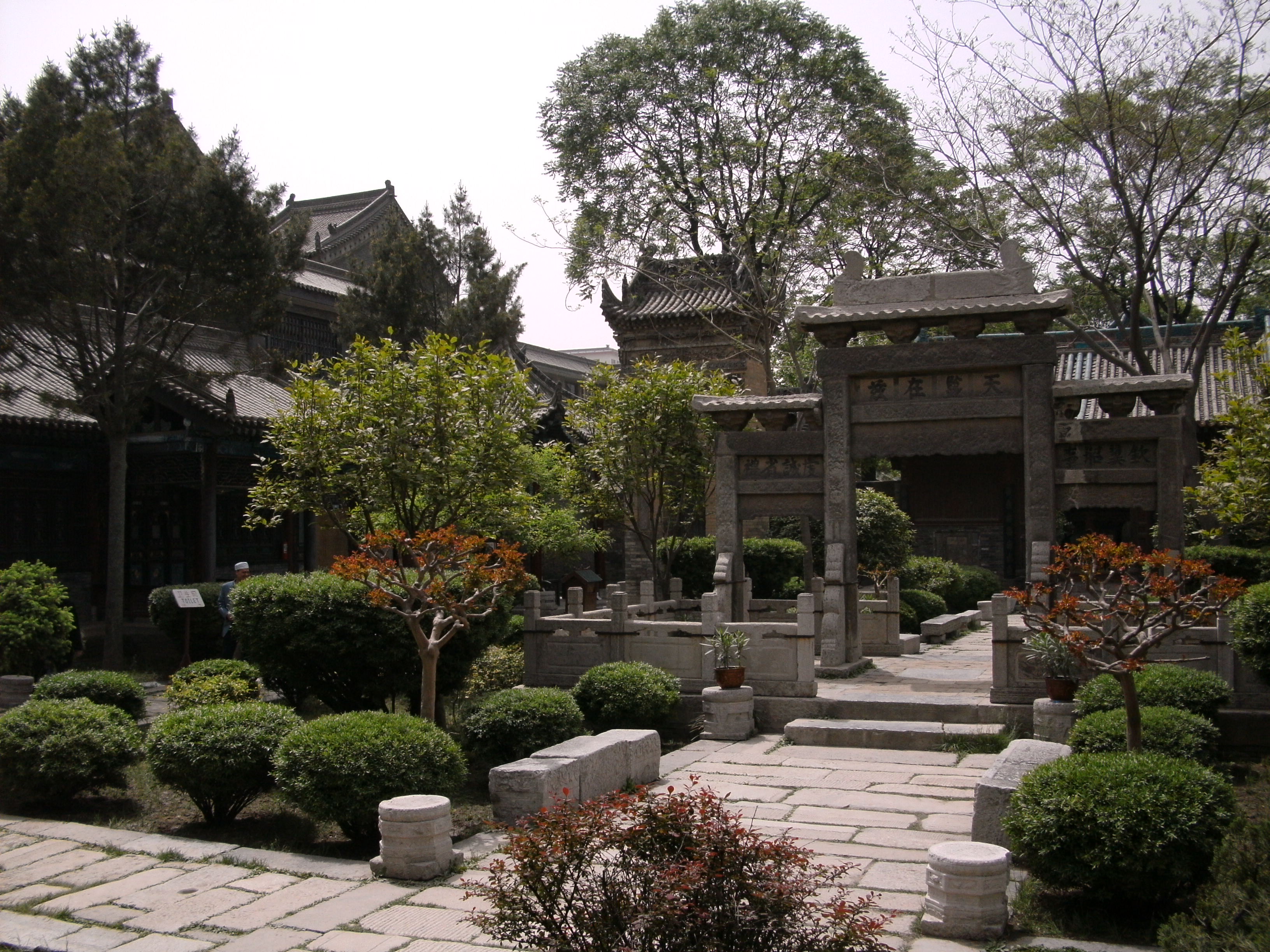Steve Watson
Information: Travels: China: Diary (Beijing, Xi'an, Chengdu, Suzhou)
|
24/04/2010 (Saturday)
|
|
|
Arrived in XI'AN.
The train was on time, and I had actually managed to get some sleep - though not enough. Anyway, I got off the train, and was met by the hostel people who took me to the place free of charge (that's always good) and was looking forward to a shower and a shave and to brush teeth and to have breakfast - but the girl said to me 'You come to terracotta warriors now. Yes. You come. Mmh!' 'But I'm dirty and I want to sleep' 'No you come' 'But...' 'Car is waiting. We leave now.' 'Oh, OK'. So by the time I got back at 5 pm you can imagine I was pretty exhausted. And also smelly I think.
This wasn't as nice a group as the Great Wall tour, but it was still ok. The tour guide, Jiajia talked a bit too much for my taste, and a bit too insistently; and we stopped far too often at places where we could do shopping, which was also a bit annoying. The first stop was at a place where they manufacture imitation warriors - who cares? - in a large warehouse full of tourist tat. Yuk. I had an ice-cream and sat outside waiting for the bus to get going again.
The Terracotta Army was pretty impressive, but not altogether in a good way. These extravagant burial goods simply remind you of what a huge waste of time and effort it all is. And makes you think that the poor bloody slaves might have been better employed on something other than the mad whims of an all-powerful monster. What wasted lives are buried in these pits. (I really despise the First Emperor.)
|
|
|
|
|
|
Terracotta Warriors Lots of them. This is pit #3.
|
|
|
|
|
|
Terracotta Warriors More of them. This is more of pit #3.
|
|
|
We had a lunch - quite a large one (Y25) - in another department store, where you couldn't actually browse because the staff would follow you around wherever you walked. Most disconcerting. They had caramelised sweet potatoes here, which were just yum. Then back home. I find that this trip cost Y160, which seems reasonable. But I was very glad to get back and have a cleanup and a rest.
This hostel has a pretty good restaurant and you get a free introductory coffee and beer. I did that and chatted to a couple of folks who've been touring in the other direction from me. We were swapping travellers' tricks. I was also able to get a very conveniently sized map from the hostel
|
|
|
|
|
|
Xi'an Map of the old centre of Xi'an. You'll notice the walls prominently marked. They are pretty impressive.
|
|
|
Afterwards, in the evening, I walked about the South Gate, observing the Chinese version of line dancing, and across the street there was some chap entertaining a large quiet crowd by singing them a story - at least that's what it sounded like to me, it can't have been his singing skills that kept them interested, so I assume it was a narrative of some kind. Pity I couldn't understand a word of it.
|
|
|
|
|
|
South Gate by night The walls and trees around the gate are brightly lit and decorated. It's a shame that the camera really can't do justice to it at night.
|
|
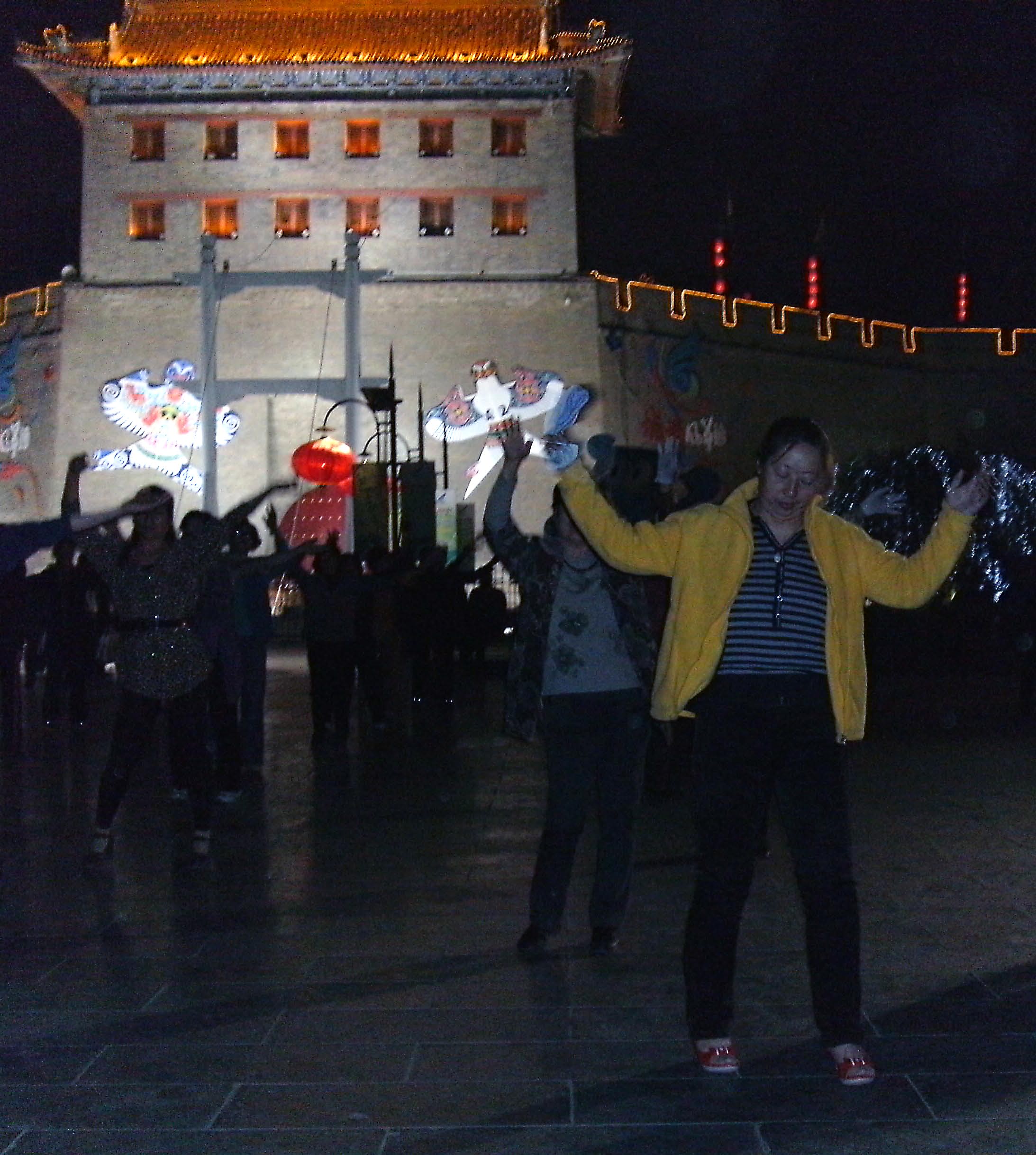
|
|
|
Dancing at the South Gate Middle- aged people having a fun time.
|
|
|
25/04/2010 (Sunday)
|
|
|
Not a particularly interesting day today. I woke up very late - about 12:30 - and then had to hurry about doing various things before I got online about 1pm to make a prearranged contact. I had to change my room (checkout at 12!) repack my bags, catch the laundry lady so that I could have clean socks and undies and shirts. (2.5 kg of laundry = RMB20 = $3.50. A bargain!) Of course, the contact wasn't made so it was all a bit of a waste of time. Never mind; it meant I could then go back to my room and have a shower and a shave.
All I really did today was walk into town to have a look at the Drum and Bell Towers. Not terribly interesting, but they are something. The Bell tower is located in the middle of a major roundabout and you have to go into a subway to get to it - and run a gauntlet of awful souvenir shops too. (Who ever buys any of this dire stuff?)
|
|
|
|
|
|
Bell Tower Most Chinese cities seem to have had a zhonglou like this, paired with a drum tower (gulou), which were used to alert the citizens. This one's pair is across the road.
|
|
|
|
|
|
The Jingyun Bell Looking towards the Drum Tower, which is just visible through the two left supports. The bell was apparently made in 711 AD, but it still works well.
|
|
|
26/04/2010 (Monday)
|
|
|
Another pretty easy day, thank heavens. In the morning, before the city was properly awake, I walked across to the nearby Beilin Museum to see the 'Forest of Tablets' (it's marked with the number 5 on the map above), which is a collection of engraved copies of the 12 Confucian Classics (including the Er Ya - a type of ancient dictionary.) While I was here and looking over these stones, to which I was deaf, I greatly regretted not being able to read the language, and wished that I had taken up Alanis' offer to help teach me the writing. But then, as I have observed, those who can read modern Chinese - in traditional characters - may be able to 'pronounce' what they see in an ancient text, but they cannot 'read' it. To them, it seems, it is merely gibberish, as if words and characters had been randomly set upon a page. So I would have had to learn at least two languages and a logographic script for both in order to make sense of these tablets. Perhaps that is too much effort to prepare for a one month holiday. Another reflection that this observation gives rise to is that one of the the usual arguments for maintaining the traditional script and rejecting the transition to a latinisation lacks some power. There is little advantage to be gained in the way of ensuring the popular access to ancient culturally significant texts. They are no closer to the common Chinese than Latin texts are to us - or perhaps Old English is a better example. With a translation of Beowulf to hand we can recognise some of the Old English words but the meaning of sentences is impossible to glean.
One particularly interesting stele here is the 'Nestorian stele' which records the coming of Christianity to China. I wasn't even aware of the existence of this until I read about it later. The most surprising sight, however, was a tablet that was decorated with the portrait of Confucius that is commonly used to illustrate encyclopedia articles or that makes the frontispiece of translations and so on. Here it is:
|
|
|
|
|
|
Kŏng Fūzĭ (孔夫子) The Master contemplates the Forest of Stone Tablets.
|
|
|
There was also a man in a corner of the museum who was doing inkings of some of the tablets. He covers the tablet with ink or is it an ink powder, carefully lays a long piece of rice paper (I think) over it, and taps gently over the whole surface until he can peel it off and present for sale a copy of the inscription. It's rather like the old hobby people once had of rubbing brasses in churches or gravestones in old cemeteries.
And speaking of gravestones, amongst the tablets here are many, many memorial tablets. They are set up by those who wish to preserve the memory of some eminent person, describing the nature of their virtues, the happiness of their life, and the circumstances of their eminence. There were a few translations and summaries placed at the side of some of the more significant ones, I suppose, but it would have been nice to be able to browse these biographies for myself. Xi'an was the capital of the Tang dynasty empire when it was known as Chang'an ('Eternal Peace' - it was only after the Ming that it was demoted to merely 'Western Peace') and many of the memorials give insight into the way of life of that time - commonly acknowledged to be the cultural height of Chinese civilisation, although that might be a little presumptuous because that civilisation appears to me to be far from dead at this point.
Took a break for lunch and other things - went to a ticket office to get a train ticket to Chengdu, picked up laundry - then off on a bus to the Big Wild Goose Pagoda. What a wonderful name for a temple site! Getting there by bus was pretty exciting - standing up you can't see anything so I had to wait until I heard something like 'next stop big goose pagoda' in Chinese and on the way back I was listening hard for 'south gate stop'. Quite nerve racking - I could have been travelling in circles for the rest of the day! (On the other hand, it's quite gratifying that I was able to understand the bus announcements. I learned later that when I pronounce 'next stop' myself I have been unknowingly imitating the female-ish tone of the women who are always used to make these public announcements - 'people' find that amusing.)
|
|
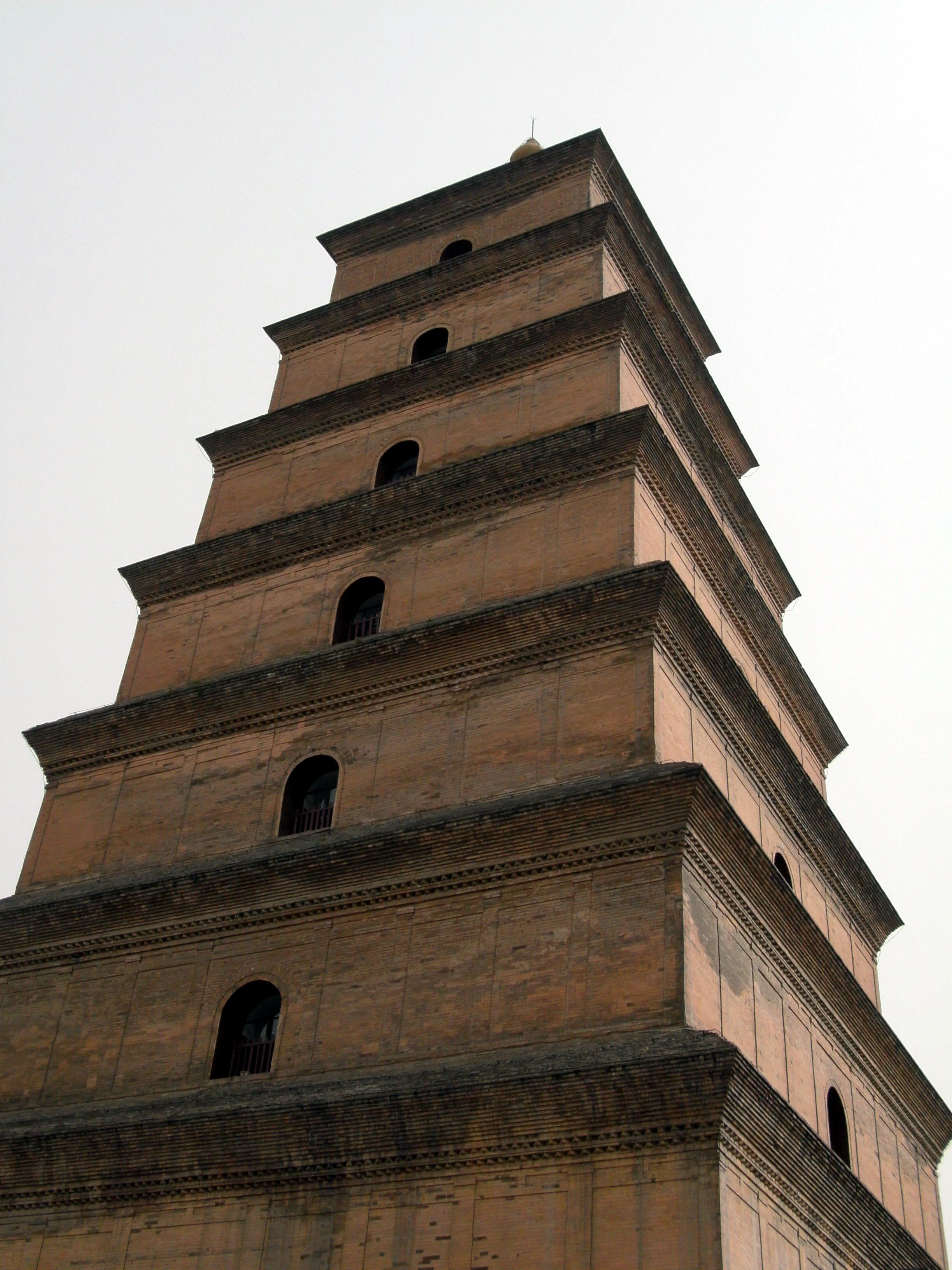
|
|
|
Da Yan Ta Seven stages to enlightenment. "Hsüan-tsang himself saw the Bodh-Gaya shrine; and I think there can be no doubt but that it, or some other much like it, was the actual model he had in mind." Willetts, Chinese Art, vol. 2, p. 730. The temple was built (625) by the request of Xuanzhang to house the sutras that he had brought from India. He became the head of the monastery in which this is built. There is a statue of him in the courtyard.
|
|
|
|
|
|
Buddha The Master contemplates a persecution of the Jews. Or maybe not; but then why has he got a swastika tattooed on his chest, hmm?
|
|
|
|
|
|
Buddha in a box Let's just not disturb him. Let sleeping Buddhas lie, I say.
|
|
|
|
|
|
Buddha harrows Hell On the facing wall is a scene of Buddha in Heaven - which is a bit more cheerful; but I noticed the tiny 'no photos' sign as I was walking over to record it. I hope I gave no offence to the worshipper there.
|
|
|
|
|
|
Pool by the Pagoda The pagoda is surrounded by a type of 'cultural park' one of whose main features is this pool. People stand on the flagstones to photograph the pagoda and all around the sides are people sitting and enjoying the peaceful environment.
|
|
|
|
|
|
Fishing Just past the bus stop on the way back to town I leant over the wall to watch people fishing below the city wall. That is a South Gate tower in the background.
|
|
|
I spent most of this evening chatting to one of the waitresses here who is training to be an interpreter. She was telling me about her family in the far provinces (11 hour train, 3 hour bus, 1.5 hour motorcycle ride to get there.) They live in a cave. A comfortable cave but a hole in the ground all the same. Their cave has electricity and running water. I think that's just weird. This morning I've been helping other travellers make their wishes known to the English-challenged morning shift in the restaurant. I'm so busy helping people, I should be paid for this.
|
|
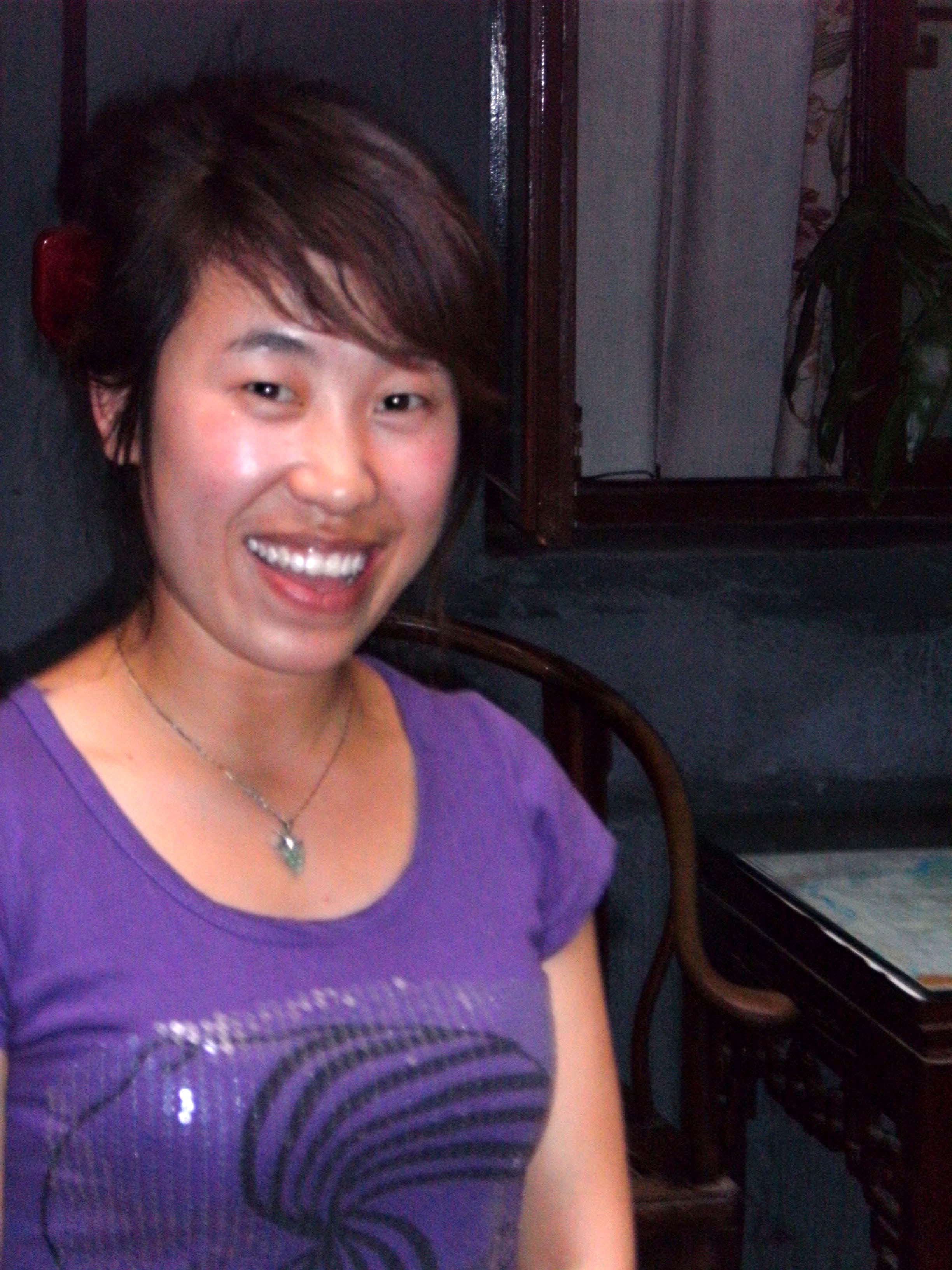
|
|
|
Mickey Friendly staff!
|
|
|
27/04/2010 (Tuesday)
|
|
|
This was an easy day. The only real exertion was a walk up past the Drum Tower and into the muslim quarter. The aim was to visit the Great Mosque. This turned out to be picturesque, but rather decrepit. It really should be better looked after.
|
|
|
|
|
|
Beiguangji Jie A little taste of the Near East in the heart of the Far East. This street connects to a long narrow alleyway with decrepit surrounds that finishes at the Great Mosque.
|
|
|
|
|
|
A courtyard in the Great Mosque (Dàqingzhen sì) The largest ancient mosque in China. It's still in use but the mosque itself is off-limits to filthy kaffirs like me. It's interesting to note that there is absolutely nothing of Near Eastern inspiration in the architecture: even the mosque proper is a typical Chinese pavilion.
|
|
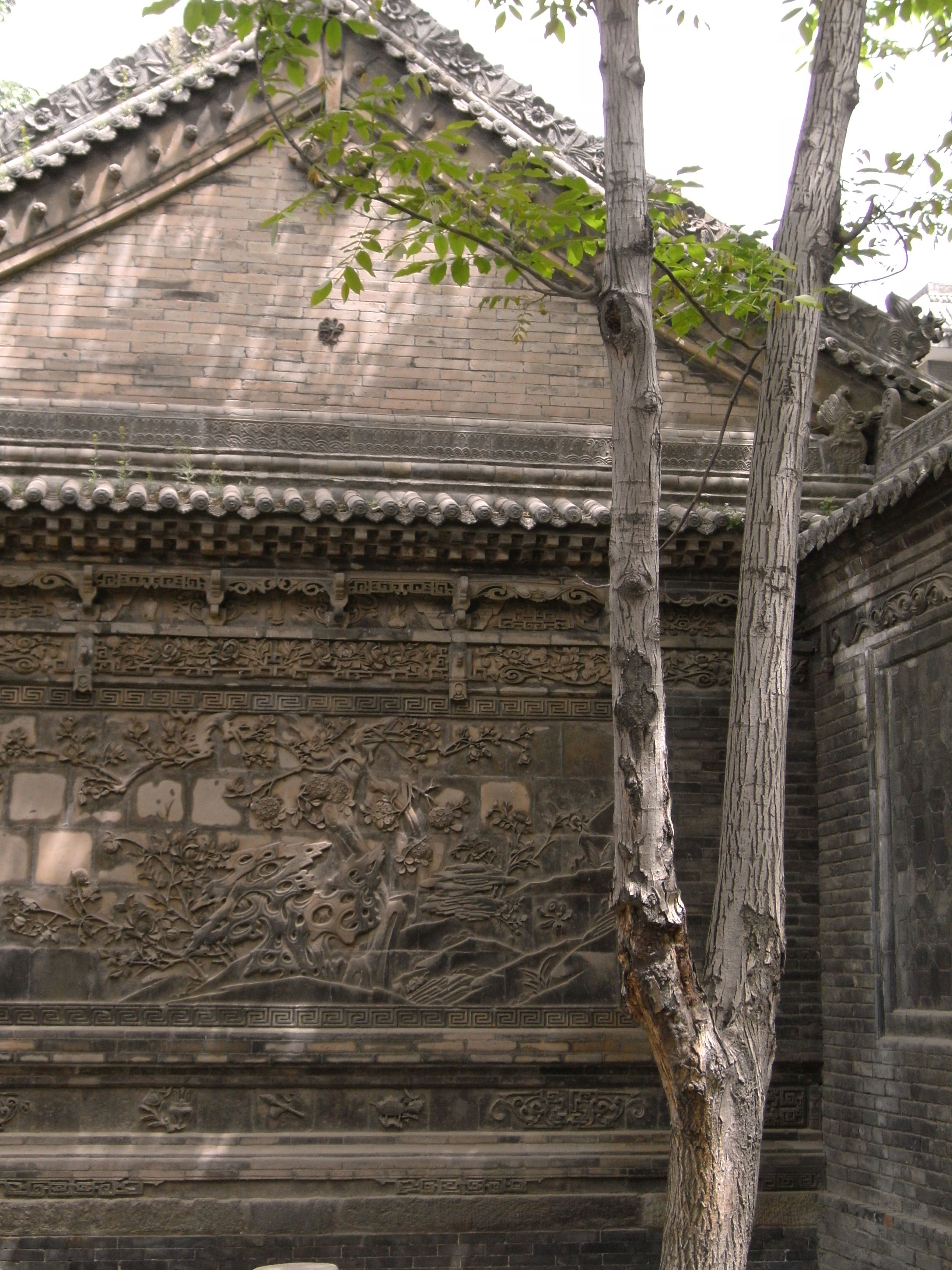
|
|
|
A wall in the Great Mosque Many of the walls are decorated..
|
|
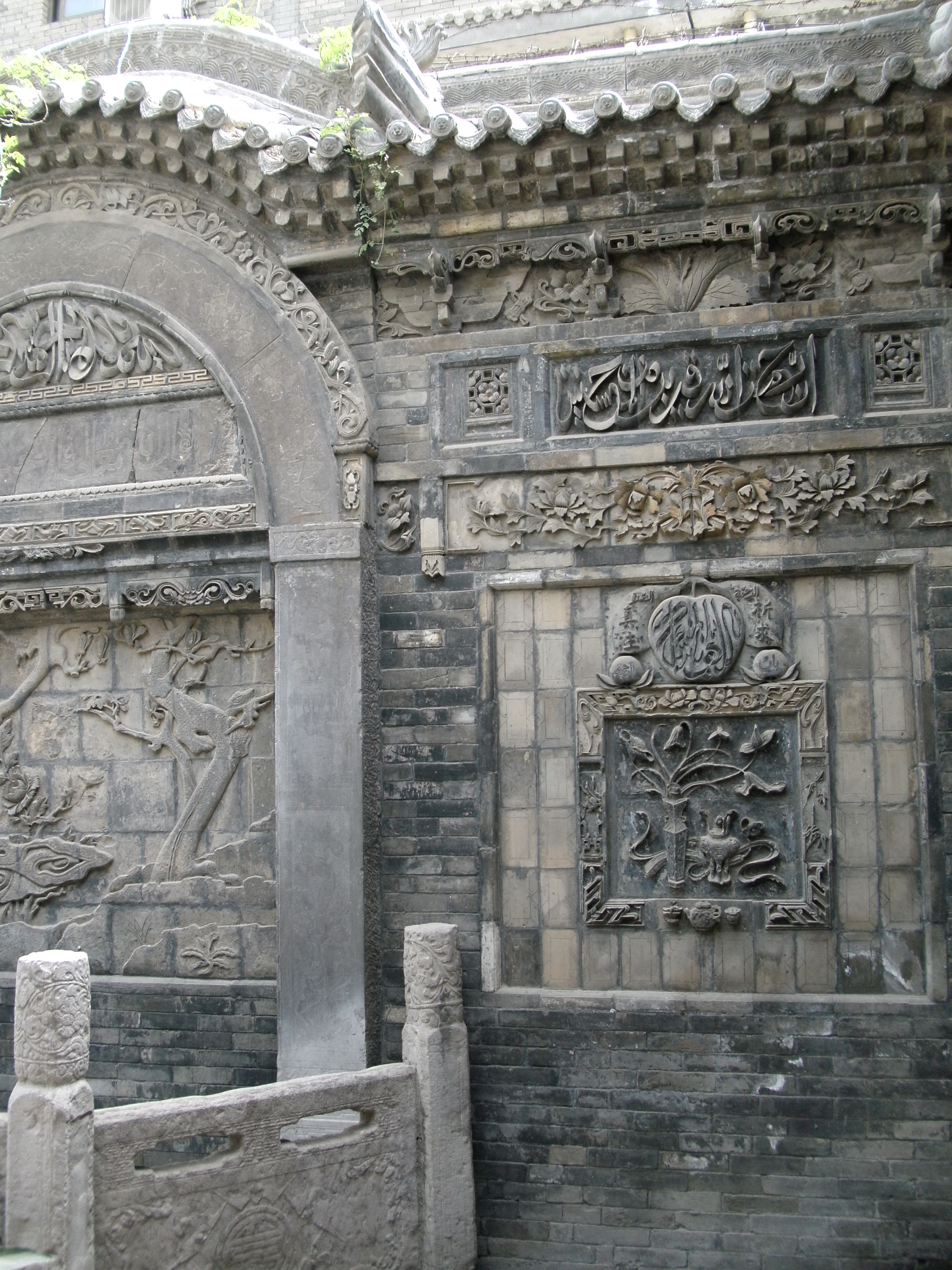
|
|
|
Another wall in the Great Mosque
|
|
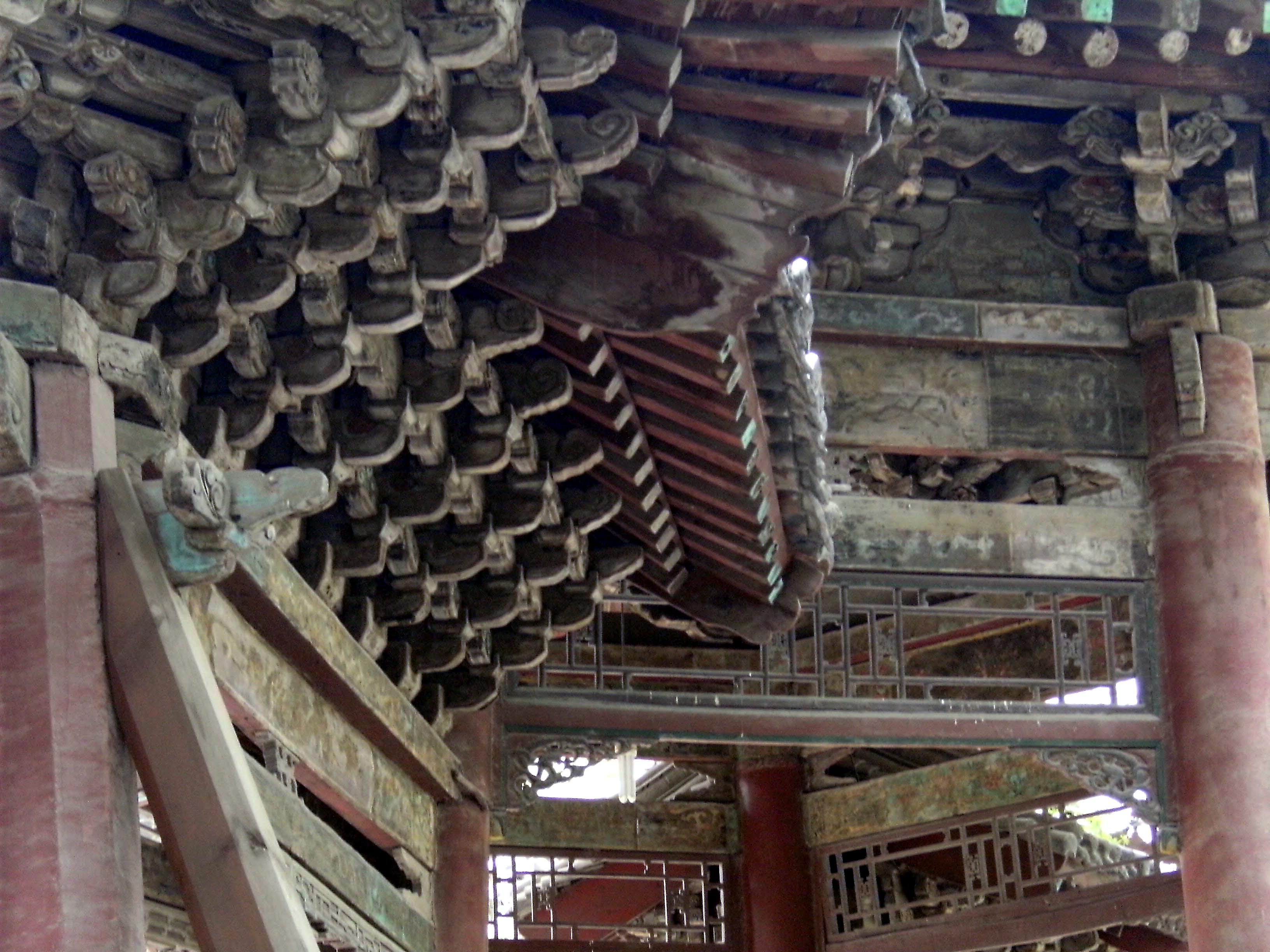
|
|
|
Details of roof construction Absolutely standard Chinese style - c.f. the under roof of the Temple of Heaven.
|
|
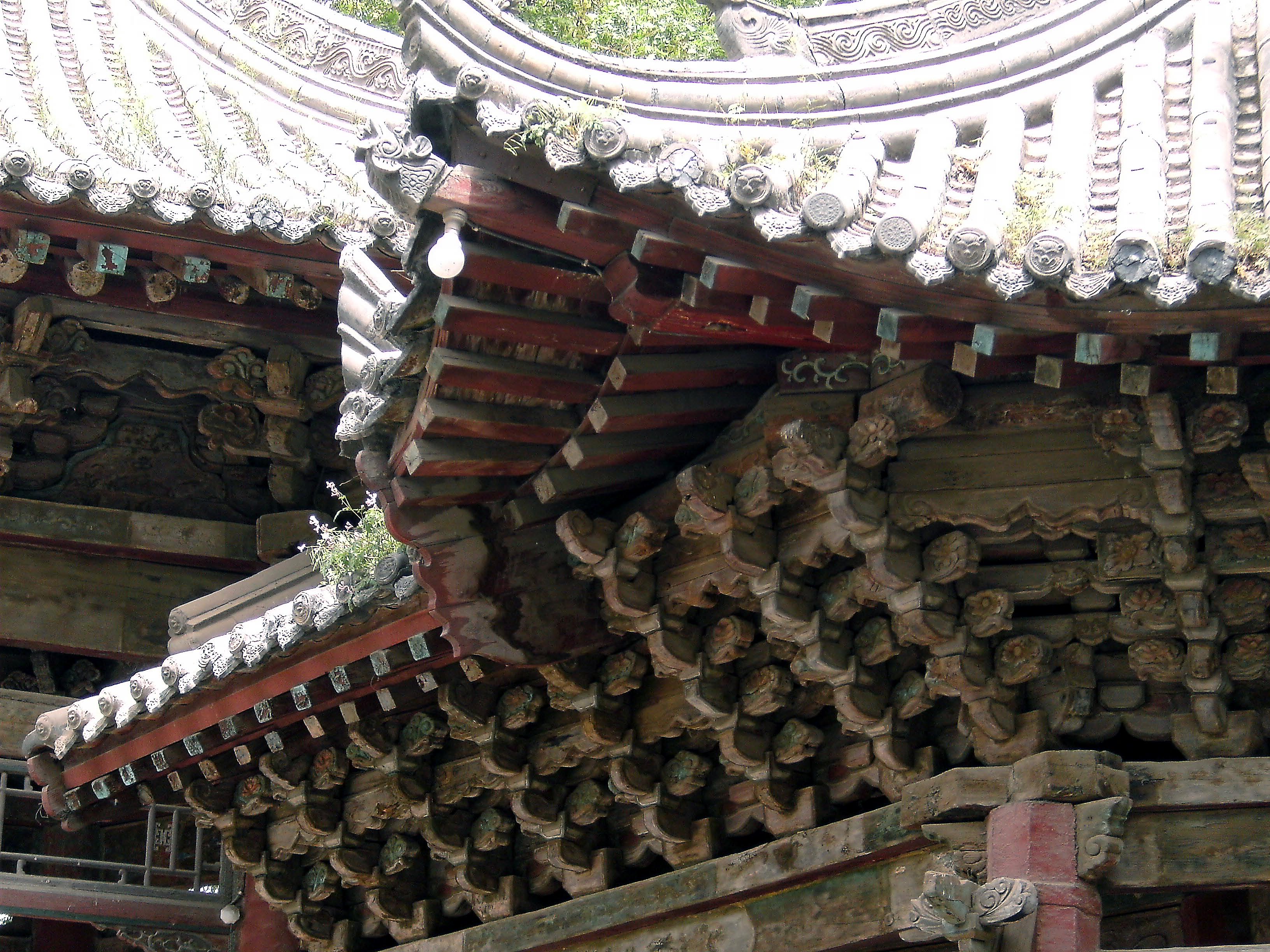
|
|
|
More details of roof construction
|
|
|
28/04/2010 (Wednesday)
|
|
|
The only thing I really did today was to walk along a part of the city wall. As I've said to several people already, it's actually much more impressively massive than the Great Wall, because it's wider and taller and the way it towers over the buildings at its feet emphasizes its size. But, of course, the Great Wall really is the greater collective achievement: it's just that it is greater because of the length over which it stretches, and this really doesn't make an impression upon one's senses the way the city wall does. One has to work one's imagination to get any real idea of the incomprehensibly vast effort that went on over centuries to make the Great Wall what it is.
|
|
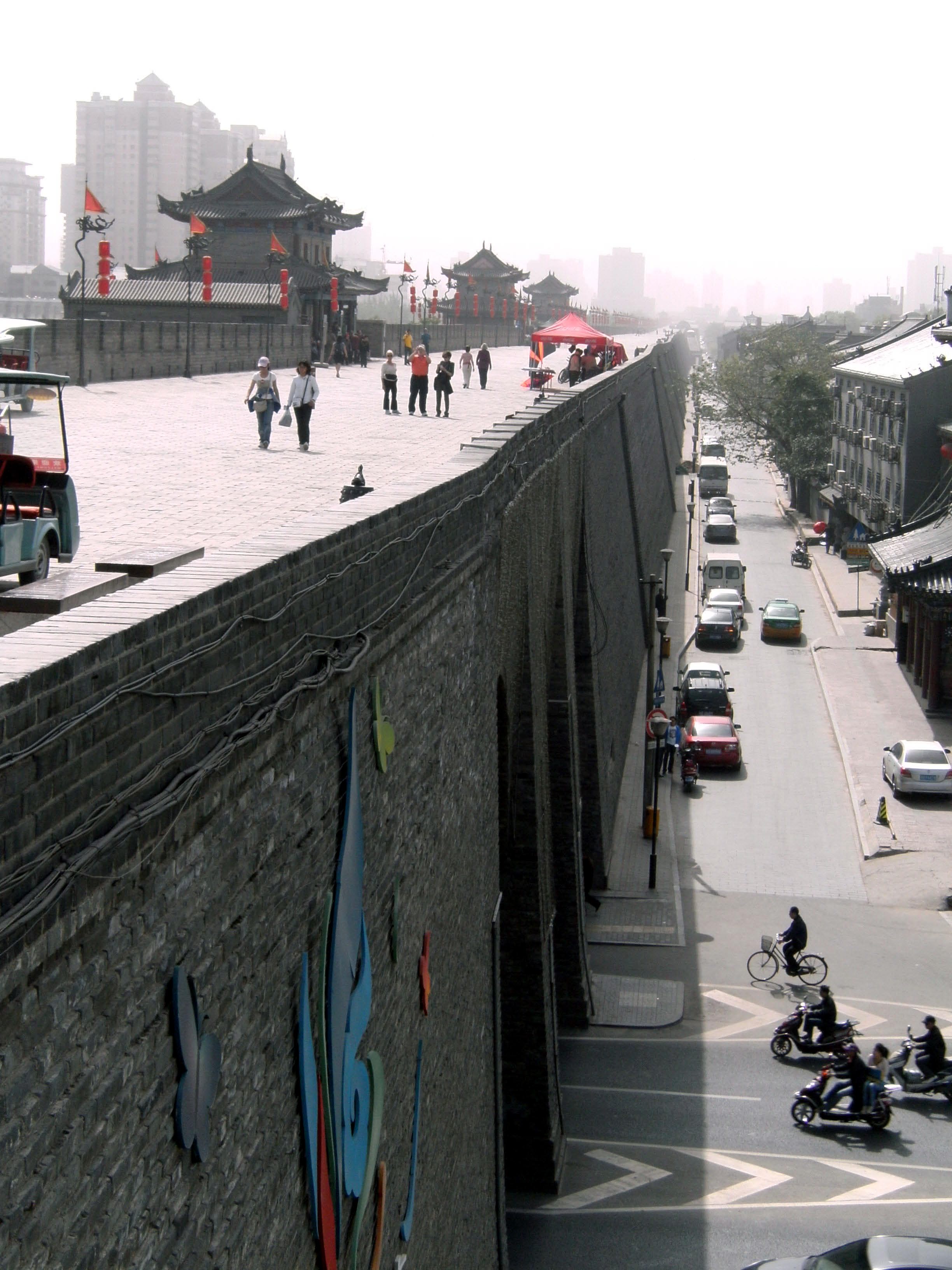
|
|
|
Xi'an's city wall Looking toward the West along Shunchengxiang road. In the foreground is the face of the South Gate and at right just in front of the white car is the entrance to Shu Yuan hostel. I walked towards the red pavilion to look down at it. From near there you can also hire bikes to ride around the circuit - but that didn't seem a particularly interesting thing to do, so I didn't.
|
|

|
|
|
Preparing a kite The red pavilion turned out to be a kite hire place. It seems that I had missed by just a week a big kite flying competition - that's what the large signs on the South Gate towers are there for.
|
|
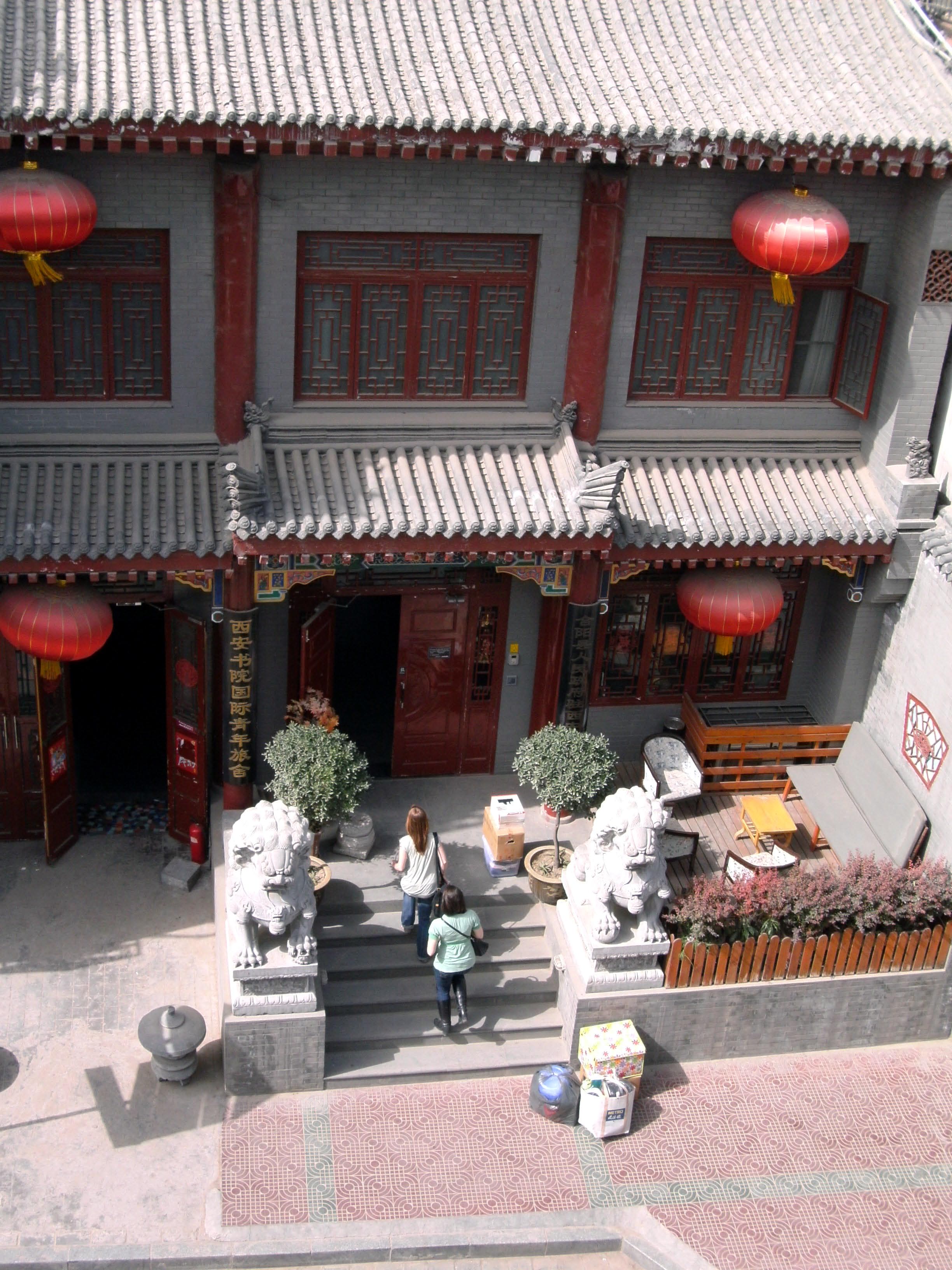
|
|
|
Shu Yuan hostel Looking down on it from the wall.
|
|
|
I also made one last effort to find the foreign language bookshop, and this time I managed to do so. It had a tiny little lign beside a clothes shop, and you're actually supposed to walk through that shop to the back and then up four flights of stairs to get to it. I've gotta say, that's just bloody bizarre. And it wasn't a very good selection anyway: too much highbrow stuff and not enough holiday level reading. And if you're going to have high brow stuff, then for goodness saker include English translations of Chinese classical literature - especially the sorts of titles that are rather hard to get outside China. (I'm thinking of the full version of 'Journey to the West' and philosophers like Chu Hsi and Wang Yangming and so on.) I'm really regretting not picking up a few things in Beijing when I was there; this Dostoevsky monstrosity that I've been inflicting on myself is no fun at all. I remember Phillip D at work suggesting that all Russian authors showed symptoms of some sort of mental disease that made it impossible for them to stop talking or to keep to a point. The more I read of this Karamazov thing the more sympathetic I am to that point of view.
I went out to the train by bus. The hostel people said that this would be more convenient than going by taxi: but they were wrong about that, weren't they. I went off with a foul-mouthed but sociable English tourist called Michelle- Marie, and we both had to struggle on to the crowded (of course!) bus with our huge bags, and then we were in everyone's way standing in the aisle - and we were having difficulty staying upright because the driver was swerving and braking and accelerating randomly all the way. Oh the convenience! We got off at the train station (we guessed) and then had to wait for 2 hours in 31o heat in a crowded waiting room with people just staring at us in that annoying third world fashion. Why the Chinese are doing that goodness only knows. To top it off I couldn't sleep on the train at all, so I'm not feeling too crash hot now that I've arrived in CHENGDU.
|
|
